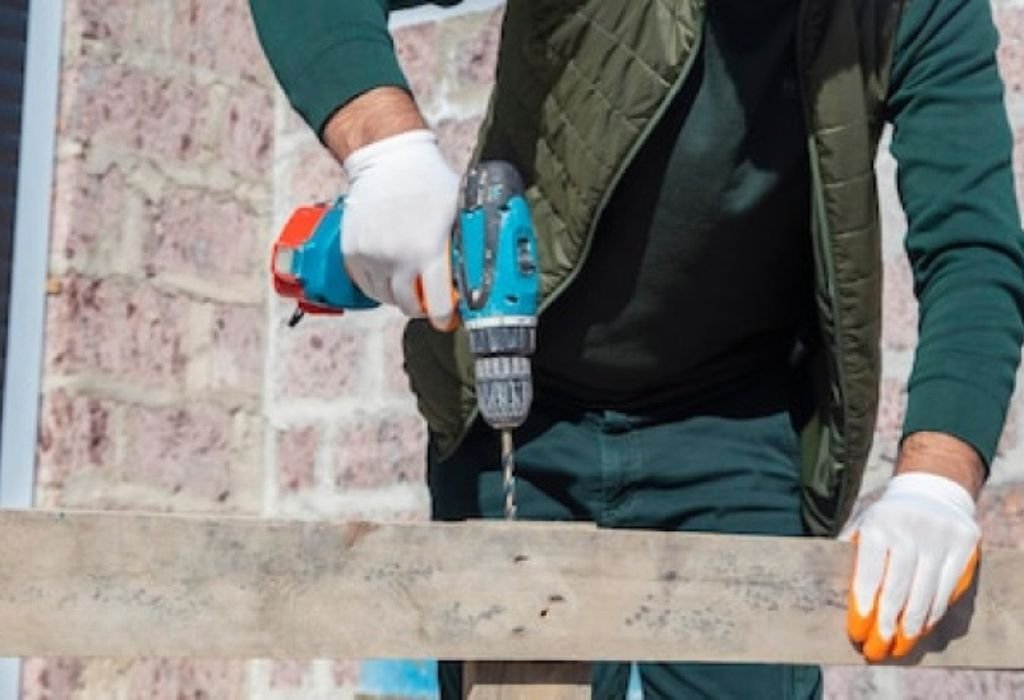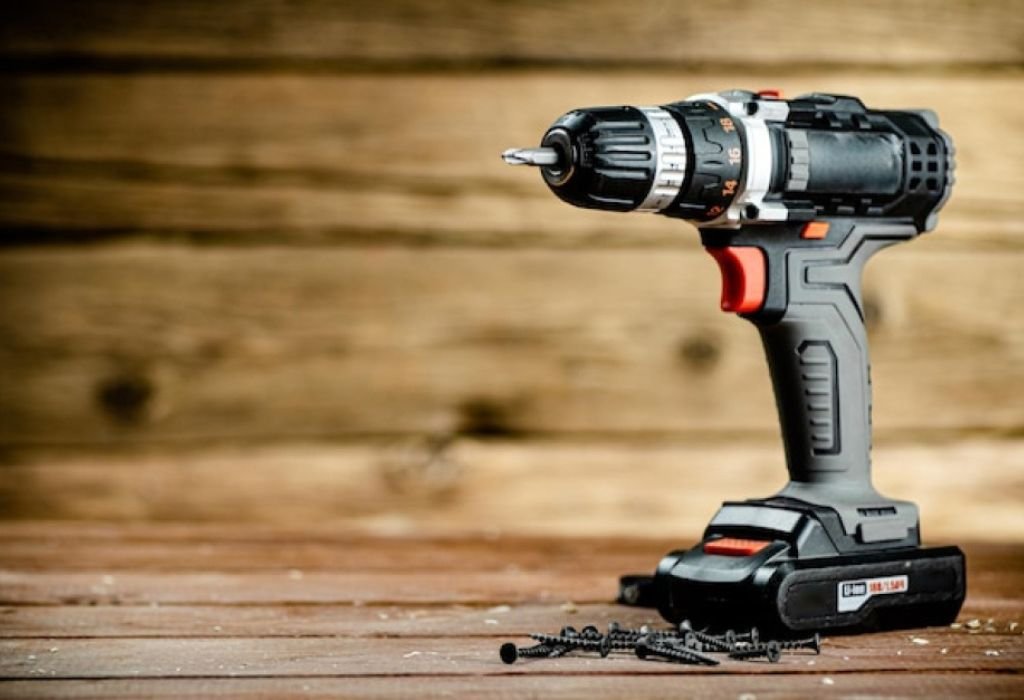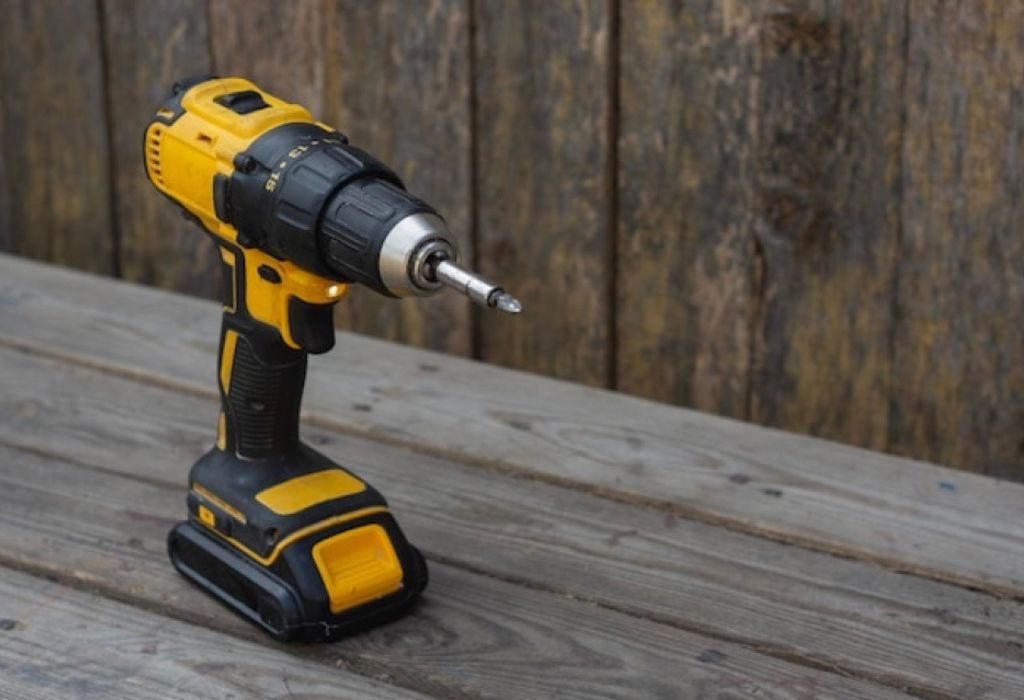A homeowner tries to install shelves inside a narrow cabinet but quickly finds that a standard drill won’t fit.
The frustration grows until a right angle drill makes the job possible in seconds.
A right angle drill features a head set at 90 degrees to the body, allowing drilling and driving in confined spaces where traditional drills cannot operate.
Its compact head, ergonomic grip, and angled chuck provide the clearance needed to work between studs, inside cabinets, or overhead in ceilings.
According to Pro Tool Reviews, right angle drills are among the fastest-growing cordless drill categories, especially for plumbers and electricians who face tight workspaces daily (Pro Tool Reviews).
For professionals, the tool isn’t just convenient — it improves efficiency and reduces fatigue. Studies show that specialized tools like right angle drills can cut installation time in tight spaces by 25% or more, saving both labor costs and effort.
The tool is also versatile. Beyond professional trades, DIY enthusiasts use right angle drills for furniture assembly, cabinetry, and home repairs.
Whether driving screws in hard-to-reach corners or drilling through studs for wiring, the right angle drill delivers torque and precision where standard drills fail.
This guide explores what a right angle drill is, how it works, its key features, common uses, benefits, limitations, and buying tips.
By the end, you’ll know exactly when and why to reach for this specialized drill.
Quick Answer — What Is a Right Angle Drill?

A right angle drill is a power drill with its head positioned at a 90-degree angle to the body, designed to work in confined or hard-to-reach spaces. This unique design allows the user to drill or drive screws where a standard drill simply cannot fit.
It features a compact head, ergonomic grip, and lower RPMs compared to traditional drills, which helps deliver higher torque for controlled drilling. The angled chuck enables efficient operation in cabinetry, framing, plumbing, and electrical work.
Both professionals and DIY users benefit from this tool because it solves one of the most common jobsite problems — limited clearance. From installing cabinets to running wiring between studs, the right angle drill is built for precision in tight spaces.
What makes it different from a standard drill?
Its head is set at a 90-degree angle instead of being inline.
Is it only for professional use?
No, DIYers also use it for cabinets, furniture, and home repairs.
Can it drive screws as well as drill holes?
Yes, with the right bits, it handles both tasks.
Is torque higher than a regular drill?
Typically yes, because it runs at lower speeds for added control.
Are there cordless right angle drills?
Yes, both corded and cordless models are available.
How a Right Angle Drill Works
The right angle drill uses a gear mechanism to transfer power at a 90-degree angle. The angled chuck allows the bit to turn sideways while the body of the drill stays aligned for access.
Most right angle drills operate at lower RPMs than standard drills, which increases torque for drilling through wood, metal, or plastic in tight spaces. This balance makes it effective in construction and repair jobs.
Some models feature rotating heads or adjustable handles to further improve reach. Others come with attachments, allowing a regular drill to temporarily mimic the performance of a right angle tool.
Does the head always stay fixed at 90 degrees?
Yes, most are fixed, but some rotate for flexibility.
Can I use an attachment instead of buying one?
Yes, but attachments wear faster than standalone tools.
Why is RPM lower in these drills?
To provide higher torque for tougher drilling.
Are they safe for overhead drilling?
Yes, compact size makes overhead work easier.
Do they accept normal bits?
Yes, standard drill bits fit their chucks.
Key Features of Right Angle Drills
Right angle drills have several unique features that set them apart from traditional drills. The most important is the compact head clearance, often measuring just 2–4 inches, enabling access to tight spots.
They are typically designed with ergonomic grips for comfortable one-handed or overhead use. Many models also include variable speed triggers for greater control during precision drilling.
Advanced versions offer LED lights, brushless motors, and cordless power platforms that improve efficiency and battery life. These upgrades make them versatile for both pros and hobbyists.
What is the average head size clearance?
Usually 2–4 inches, depending on the model.
Do they come with side handles?
Yes, many include adjustable or detachable side handles.
Do right angle drills have clutch settings?
Some cordless models offer adjustable clutches.
Is a brushless motor worth the price?
Yes, it provides more runtime and durability.
Can I use batteries from other tools?
Yes, if the tool is part of the same brand ecosystem.
Common Uses of a Right Angle Drill

Right angle drills are widely used in plumbing, electrical work, and carpentry. Their ability to work in tight quarters makes them indispensable in these trades.
Plumbers use them for boring holes between studs or joists to run pipes. Electricians use them for drilling access holes to run wiring through walls and ceilings.
DIYers and carpenters rely on them for cabinet assembly, furniture building, and repairs in confined areas. The tool is also helpful for decking projects, especially near walls or corners.
Are they common in plumbing jobs?
Yes, plumbers use them in crawl spaces and between studs.
Do electricians use them daily?
Yes, they are perfect for overhead conduit holes.
Can they be used for decking?
Yes, especially in corners where standard drills don’t fit.
Do they replace regular drills?
No, they complement traditional drills.
Are they in most professional toolkits?
Yes, many tradespeople carry them daily.
Benefits of Using a Right Angle Drill
The biggest benefit is accessibility. Right angle drills let you work in places a normal drill can’t reach.
They also improve efficiency, reducing the time spent using manual screwdrivers in cramped areas. The ergonomic design makes them safer and less fatiguing, especially for overhead jobs.
Their precision is another advantage. Lower RPMs allow for better control, reducing the chance of stripped screws or damaged material.
Are they faster than manual tools?
Yes, significantly more efficient.
Do they reduce user fatigue?
Yes, ergonomic design eases strain.
Do they prevent stripped screws?
Yes, torque control helps reduce damage.
Are they safer overhead?
Yes, they are compact and well-balanced.
Do they save time on jobsites?
Yes, many tasks finish 25% faster.
Limitations and Considerations
Right angle drills aren’t perfect. They often operate at slower speeds, which may slow larger projects.
They are usually more expensive than standard drills, especially cordless brushless models. Attachments offer a cheaper solution but lack durability.
Battery life can also be shorter under heavy loads, particularly in cordless versions.
Do they drill as fast as standard drills?
No, they trade speed for torque.
Are they heavier?
Slightly, though still manageable.
Do attachments fit all drills?
Not always — check compatibility first.
Can they drill masonry?
Only if rated for hammer function.
Do batteries run out quickly?
Yes, under heavy use.
Right Angle Drill vs Drill Attachments
Dedicated right angle drills outperform attachments in durability and torque. Attachments are cheaper but tend to wear faster.
For occasional DIY work, attachments may be enough. For professionals, a standalone tool offers more power and reliability.
Heavy-duty tasks like plumbing and electrical jobs are best handled by dedicated right angle drills. Attachments are better for light woodworking or quick home fixes.
Are attachments good for light-duty work?
Yes, they are cost-effective for DIYers.
Do attachments last long?
Not as long as standalone drills.
Can they handle high torque?
No, they are limited compared to full drills.
Should pros use attachments?
Only as backups, not main tools.
Is it worth owning both?
Yes, attachments for light work, drills for heavy jobs.
Buying Guide — Choosing the Right Angle Drill

When buying, focus on head size, torque rating, speed settings, and battery platform. Compact heads offer better clearance, while higher torque helps with denser materials.
Cordless drills offer convenience, but corded models provide continuous runtime. Choose a model based on your projects and trade.
Popular brands like DeWalt, Makita, and Milwaukee offer durable right angle drills with brushless motors and extended warranties.
What torque range is typical?
100–300 in-lb for compact models.
Corded or cordless?
Cordless for portability; corded for unlimited runtime.
Which brands are best?
Milwaukee, DeWalt, and Makita are highly rated.
Do warranties matter?
Yes, most offer 3–5 years.
Do you need extra batteries?
Yes, for long workdays.
Future Trends in Right Angle Drills
Future right angle drills will be smaller, lighter, and more powerful. Brushless motors are becoming standard across brands.
Smart features like torque sensors and connectivity will improve control. Battery improvements will extend runtime for cordless models.
Accessories such as flexible extensions and reinforced attachments will expand versatility.
Will they get smaller?
Yes, compact design is the trend.
Will torque levels increase?
Yes, with better gear ratios.
Will smart features be added?
Yes, torque control and sensors are coming.
Will attachments improve?
Yes, but still weaker than drills.
Will cordless dominate?
Yes, most new models are cordless.
Conclusion
So, what is a right angle drill? It’s a 90-degree drill designed to reach places a standard drill cannot.
It’s widely used in plumbing, electrical work, carpentry, and DIY. The benefits include better access, efficiency, and reduced strain.
While slower and more expensive than standard drills, right angle drills are invaluable for confined spaces. For professionals, it’s a must-have. For DIYers, it’s a smart addition to the toolbox.

I’m John F. Nicholas, the founder, lead writer, and drill enthusiast behind 101drill.com. With years of hands-on experience in power tools and DIY projects, I created this platform to share practical knowledge, expert tips, and real-world insights to help others master the art of drilling.
